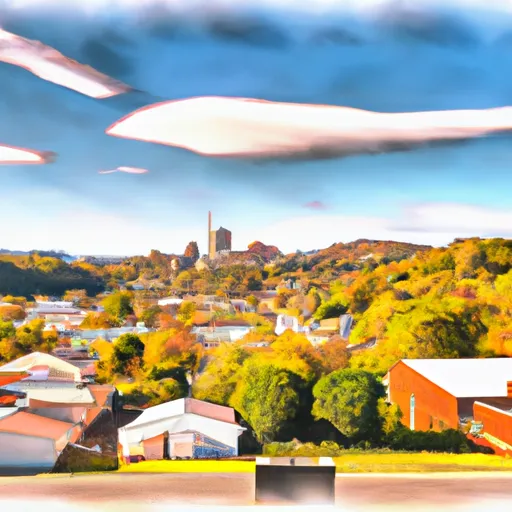-
 Snoflo Premium
Snoflo Premium
Get unlimited access to all our content
With no Ad interruptions! - Start Your Free Trial Login with existing account
Saulsbury
Eden Index
Climate
7.6
•
Recreation
1.1
•
Community
•
Safeguard
3.4/10

Saulsbury, Tennessee is a small town located in Hardeman County in the southwestern part of the state. The climate in Saulsbury is characterized as humid subtropical, with hot summers and mild winters. Average high temperatures range from the mid-80s Fahrenheit (29-32 degrees Celsius) in summer to the mid-40s Fahrenheit (7-9 degrees Celsius) in winter. Precipitation is fairly evenly distributed throughout the year, with an average of around 55 inches (140 cm) annually.
Saulsbury benefits from its proximity to Hatchie River, a major hydrological feature in the region. This river provides opportunities for outdoor recreation such as fishing, boating, and canoeing. The Hatchie River is home to various fish species, including largemouth bass, catfish, and crappie, making it a popular spot for anglers.
In addition, Saulsbury is surrounded by rural landscapes and forests, offering hiking and camping opportunities. Nearby parks and natural areas, such as the Hatchie National Wildlife Refuge, provide ample opportunities for wildlife viewing and birdwatching.
Overall, Saulsbury, Tennessee offers a pleasant climate and diverse outdoor recreation opportunities, making it an attractive destination for nature enthusiasts and outdoor lovers.
What is the Eden Index?
The Snoflo Eden Index serves as a comprehensive rating system for regions, evaluating their desirability through a holistic assessment of climate health, outdoor recreation opportunities, and natural disaster risk, acknowledging the profound impact of these factors on livability and well-being.
Climate Health Indicator (CHI): 7.6
Saulsbury receives approximately
1407mm of rain per year,
with humidity levels near 89%
and air temperatures averaging around
16°C.
Saulsbury has a plant hardyness factor of
7, meaning
plants and agriculture in this region tend to thrive during the non-winter months.
By considering the ideal temperature range, reliable water supplies, clean air, and stable seasonal rain or snowpacks, the Climate Health Indicator (CHI) underscores the significance of a healthy climate as the foundation for quality living.
A healthy climate is paramount for ensuring a high quality of life and livability in a region, fostering both physical well-being and environmental harmony. This can be characterized by ideal temperatures, reliable access to water supplies, clean air, and consistent seasonal rain or snowpacks.
Weather Forecast
Streamflow Conditions
Hatchie-Obion
Area Rivers
Hatchie-Obion
Snowpack Depths
Hatchie-Obion
Reservoir Storage Capacity
Hatchie-Obion
Groundwater Levels
Recreational Opportunity Index (ROI): 1.1
The Recreational Opportunity Index (ROI) recognizes the value of outdoor recreational options, such as parks, hiking trails, camping sites, and fishing spots, while acknowledging that climate plays a pivotal role in ensuring the comfort and consistency of these experiences.
Access to outdoor recreational opportunities, encompassing activities such as parks, hiking, camping, and fishing, is crucial for overall well-being, and the climate plays a pivotal role in enabling and enhancing these experiences, ensuring that individuals can engage in nature-based activities comfortably and consistently.
Camping Areas
| Campground | Campsites | Reservations | Toilets | Showers | Elevation |
|---|---|---|---|---|---|
| Gulf Marine State Park | None | 6 ft | |||
| Cypress Creek Landing | 17 | 103 ft | |||
| Flint Creek Waterpark | 156 | 246 ft | |||
| Big Biloxi Rec Area | 31 | 50 ft | |||
| Moodys Landing | 7 | 135 ft | |||
| Airey Lake | None | 170 ft | |||
| Keesler AFB Military | 52 | 22 ft | |||
| Janice Rec.Area | 7 | 116 ft | |||
| Shields RV Military - Gulfport NCB | None | 26 ft | |||
| Fairley Bridge Landing | 6 | 88 ft |
Nearby Ski Areas
Catastrophe Safeguard Index (CSI):
The Catastrophe Safeguard Index (CSI) recognizes that natural disaster risk, encompassing floods, fires, hurricanes, and tornadoes, can drastically affect safety and the overall appeal of an area.
The level of natural disaster risk in a region significantly affects safety and the overall livability, with climate change amplifying these risks by potentially increasing the frequency and intensity of events like floods, fires, hurricanes, and tornadoes, thereby posing substantial challenges to community resilience and well-being.
Community Resilience Indicator (CRI):
The Community Resilience Indicator (CRI) recognizes that education, healthcare, and socioeconomics are crucial to the well-being of a region. The CRI acknowledges the profound impact of these elements on residents' overall quality of life. By evaluating educational resources, healthcare accessibility, and economic inclusivity, the index captures the essential aspects that contribute to a thriving community, fostering resident satisfaction, equity, and social cohesion.

